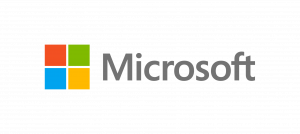This blog post is an excerpt from GovLoop’s recent guide, “The Internet of Things: Challenges and Opportunities for Government.”
The Internet of Things (IoT) is rapidly transforming the way local, state and federal agencies are meeting their missions. IoT brings the ability to collect data in real time from physical assets critical to a mission, gain insights from them and act on those insights in real time.
From more efficient and timely delivery of services, to significant reductions in operating expenses, to new insights that were not possible before, IoT has empowered agencies to digitally transform the way they do business and serve their citizens. But, how do agencies get started?
In a recent interview with GovLoop, Sam George, General Manager of Azure IoT at Microsoft, explained that government organizations can reap benefits from IoT including enhanced security, productivity and efficiency if they put the resources in place to truly leverage connected devices and the data they produce.
“IoT projects consist of three high level areas: devices, insights and actions,” said George. “For devices, Azure services like IoT Hub enable agencies to connect, communicated with and manage IoT devices which monitor physical assets in a secure, scalable way. Azure data and analytics offerings power insights, and rich business process integration services like Azure Logic Apps help agencies react to insights in real time.”
George shared that it is important for agencies to explore how IoT can benefit their mission and then start with a tactical proof of concept to gain understanding and build momentum. Azure has a rich set of offerings and a partner ecosystem that can help.
“It’s amazing to see how quickly a proof of concept can help agencies understand the value IoT can bring to bear in a mission,” said George. “Once agencies understand the impact IoT can have, we see them realizing how it can be applied to other missions.”
While security and privacy are always a concern, Microsoft has comprehensive cyberphysical security guidelines to keep customers safe. “We even have a security auditing program, called the Security Program for Azure IoT, where trusted auditors can inspect IoT solutions, find issues and recommend remediations,”said George.
Admittedly, IoT can be complicated. It can have massive scope with several moving parts and require an understanding over devices, data, and backend services. Sometimes this can be what prevents organizations from taking the first step.
Fortunately, there are technology partners that can help government agencies navigate this space. “Simplifying complex technologies for broad usage has been the focus of Microsoft and its partners throughout our company history,” George said.
Microsoft’s industry-leading portfolio of IoT offerings – extended and deployed for government by the largest partner ecosystem in the world – is what helps reduce complexity and cost, ease deployment, and speed time to market. All in a manner that is scalable, secure, and open, according to George. State and local governments are now able to use Azure IoT Hub in Azure Government, Microsoft’s cloud platform designed exclusively for U.S. government. IoT Hub in Azure Government will especially benefit agencies with mission scenarios that require a secure, compliant bridge between the IoT device or endpoint and a cloud storage solution.
Many organizations are already leveraging Microsoft Azure IoT services in a wide range of scenarios. In the case of public safety, dangerous road conditions in the U.S. result in 7,400 deaths and 700,000 injuries each year, while businesses and municipalities spend $2.3 billion on snow and ice control operations.
To help make important road-treatment decisions around snowstorms in Fairbanks, Alaska, the state’s Department of Transportation developed a sophisticated weather-tracking solution, WeatherCloud, with IoT solutions provider Fathym. WeatherCloud is built leveraging Microsoft’s Azure IoT platform and provides data analytics and insights for a more complete understanding of realtime road weather.
The potential for IoT innovation in government is powerful ¬– from reducing response times for emergency services to using usage tracking and smart grids to drive energy efficiency. Today’s military organizations can embrace IoT to improve their military effectiveness by attaching sensors to combat vehicles and other equipment that help monitor assets and obtain a real time picture of what’s happening on the ground. Likewise, fighter aircraft are increasingly being equipped with advanced sensors that give pilots a 360-degree view of battle information.
With new IoT features on Azure Government, government organizations have expanded options for delivering on their missions with innovative and secure solutions.






Leave a Reply
You must be logged in to post a comment.